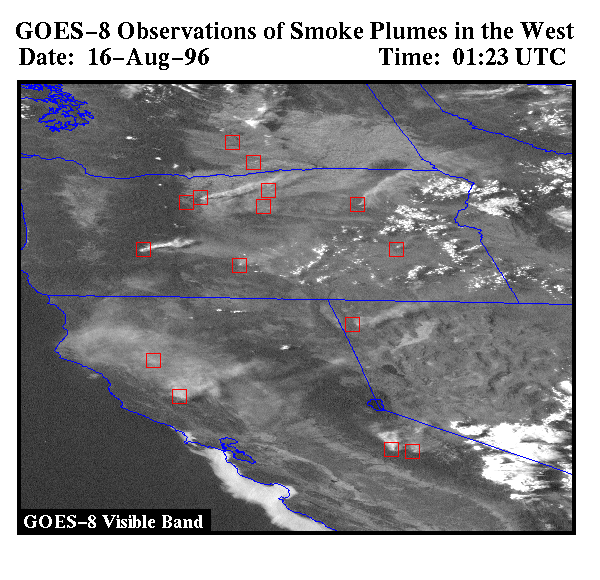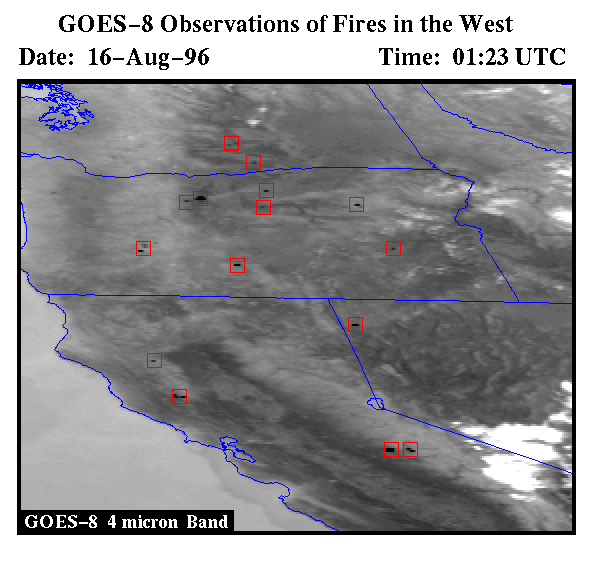
Fire Detection and Monitoring using Satellite Observations
The picture below is of a visible image taken from a weather satellite on August 16, 1996. You generally don't see visible images on the nightly news because the sun has set by 10:00 PM and so it is dark over the United States. This image was made during the daylight hours. Notice the smoke plumes. The fires are marked by red boxes. This was a bad summer for fires in the west because of the dry weather this summer, and the wet weather in the spring. Continue reading to learn how we know where the fires are located.

Observations or electromagnetic radiation with a wavelength of approximately 4 micrometers are used by scientists and weather forecasters to detect fog at night and to measure the temperature of the ocean during the night. Fires are evident in an image of data collected by an instrument that observes radiation with a wavelength of 4 micrometers. The fires show up as 'hot spots' and in the image below this is denoted by the red squares.

Scientists use observations at 4 micrometers to monitor biomass burning in North and South America.
Why do you think it would be better to use observations at 4 micrometers rather than the visible wavelengths(visible light has a wavelength between .4 and .7 micrometer)?
